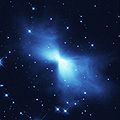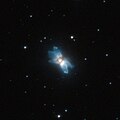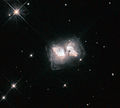This is a list of protoplanetary nebulae . These objects represent the final stage before a planetary nebula. During this stage, the red giant star begins to slowly expel its outermost layers of material. A protoplanetary nebula usually glows by reflecting the light from its parent star. This stage is usually brief, typically lasting no more than a few thousand years.
















